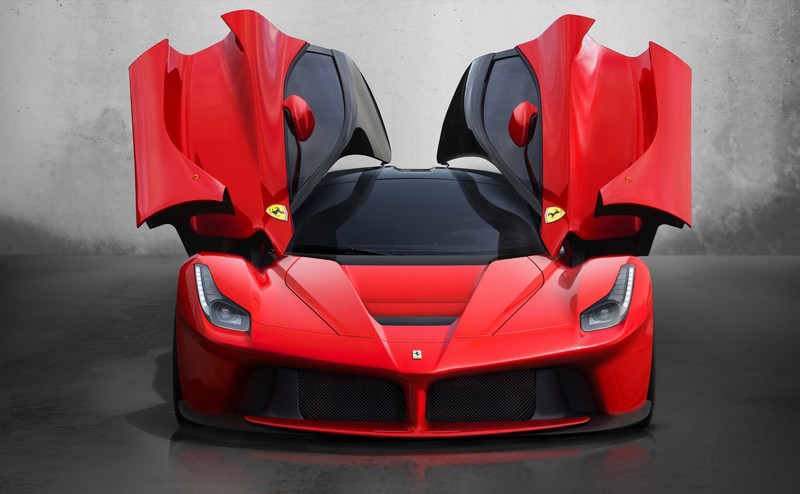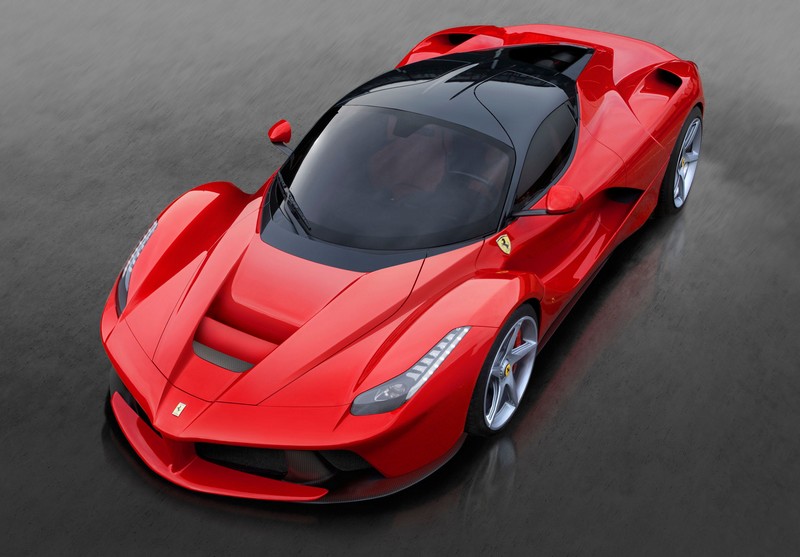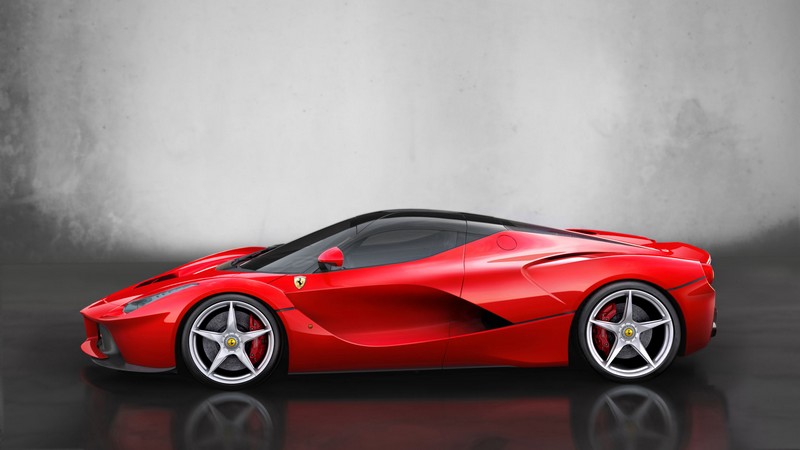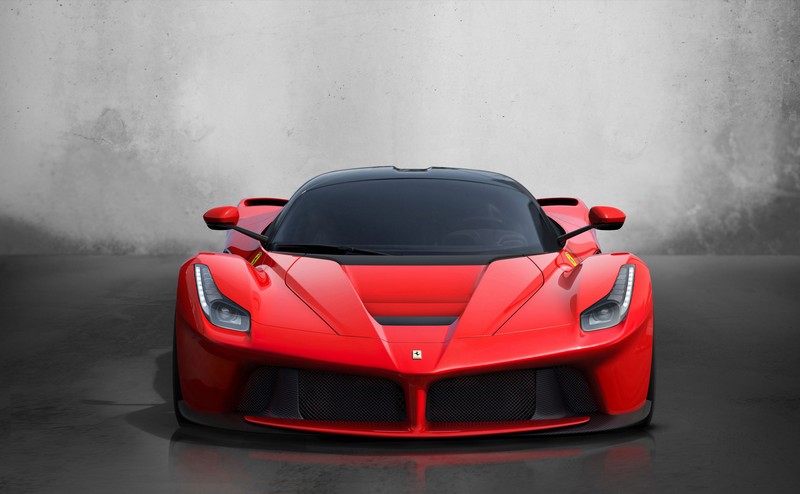Ferrari’s LaFerrari with unique dynamic controls unveiled at Geneva
Ferrari LaFerrari model, the Prancing Horse‘s eagerly-anticipated limited-series special, of which just 499 will be built, made its world debut at the 2013 Geneva International Motor Show. For Ferrari the development of a limited-series special like the LaFerrari represents an opportunity to experiment with all the technological solutions that will later filter down onto the production cars.
The hybrid technology used, known as HY-KERS, represents the perfect combination of maximum performance and lower emissions. LaFerrari in fact emits just 330 g/km of CO2 but without resorting to electric-only drive which would not fit the mission of this model. The HY-KERS system is, however, designed so that in future applications a car can be driven using exclusively electric power for a few kilometres and, during development testing, a full-electric version of LaFerrari achieved just 220 g/km of C02 emissions on the combined cycle.
The LaFerrari is the first car in Ferrari history to be powered by the HY-KERS system. The ICE represents the pinnacle of engine development and research, with a 6262 cc V12 that punches out 800 CV and revs to a maximum of 9,250 rpm, a record for an engine of this displacement. It also features a very high 13.5:1 compression ratio and a high specific output equal to 128 CV per litre. The engine is coupled with a 120 Kw (163 CV) electric motor, giving it a combined power output of 963 CV.
“We chose to call this model LaFerrari,” declared Ferrari’s President, Luca di Montezemolo , “because it is the maximum expression of what defines our company – excellence. Excellence in terms of technological innovation, performance, styling and the sheer thrill of driving. Aimed at our collectors, this is a truly extraordinary car which encompasses advanced solutions that, in the future, will find their way onto the rest
of the range, and it represents the benchmark for the entire automotive industry. LaFerrari is the finest expression of our company’s unique, unparalleled engineering and design know-how, including that acquired in Formula 1.”
The LaFerrari’s chassis features no less than four different types of carbon-fibre, all hand-laminated and autoclave-cured in the racing department using the same design and production methods as the Formula 1 car. This helped optimise the design: various functions were integrated (e.g. seats and battery compartment) into the chassis to improve torsional rigidity (+27%) and beam stiffness (+22%) whilst cutting weight.
The hybrid system is composed of two electric motors developed in collaboration with Magneti Marelli – one powering the driven wheels and the second the ancillaries – and a battery pack attached to the floor of the chassis consisting of cells that are assembled in the Scuderia Ferrari department where the KERS for the F138 is also made. The Scuderia‘s expertise allowed considerable savings in weight and size of the individual
components and the batteries weigh just 60 kg while providing the highest energy density possible for this kind of application.
The batteries are charged in different ways: under braking (even hard braking with the ABS active) and every time the V12 produces more torque than required, such as in cornering. In the latter instance, rather than the being sent to the wheels, the excess torque is converted to energy and stored in the batteries.The electric motor is coupled with the F1 dual-clutch gearbox to the benefit of optimal weight distribution,
but also to boosting energy efficiency as torque is instantly available to the wheels and, vice versa, from the wheels to the electric motor in recharging.
Aside from the new limited-series special, the Ferrari stand at 2013 Geneva Motor Show also features the complete range which is the most wide-ranging and critically acclaimed in its entire history. The five models all share the same Ferrari DNA in terms of performance, driving pleasure and technology, yet each one has its own strongly unique identity, in line with the company’s philosophy of “different Ferraris for different Ferraristi”.
LAFERRARI TECHNICAL SPECIFICATIONS:
HY-KERS system
Total maximum power 963 CV
Total maximum torque >900 Nm
V12 maximum power* 800 CV @9000 rpm
Maximum revs 9250 rpm
V12 maximum torque 700 Nm @6750 rpm
Electric motor output 120 Kw (163 CV)
CO2 emissions** 330 g/km
Performance
Maximum speed over 350 km/h
0-100 km/h <3 sec
0-200 km/h <7 sec
0-300 km/h 15 sec
ICE
Type 65-deg. V12
Bore and stroke 94 x 752 mm
Total displacement 6262 cc
Compression ratio 13.5:1
Specific power 128 CV/l
LaFerrari Dimensions:
Length 4702 mm
Width 1992 mm
Height 1116 mm
Wheelbase 2650 mm
Weight distribution 41% fr, 59% r
Gearbox
7-speed DCT
Carbon ceramic brakes (Brembo)
Front 398 x 223 x 36 mm
Rear 380 x 253 x 34 mm
Electronic controls
ESC stability control
High perf ABS/EBD Performance anti blockage system/electronic brake balance
EF1-Trac F1 electronic traction control integrated with the hybrid system
E-Diff 3 third generation electronic differential
SCM-E Frs magnetorheological damping with twin solenoids (Al-Ni tube)
Aerodynamics active





